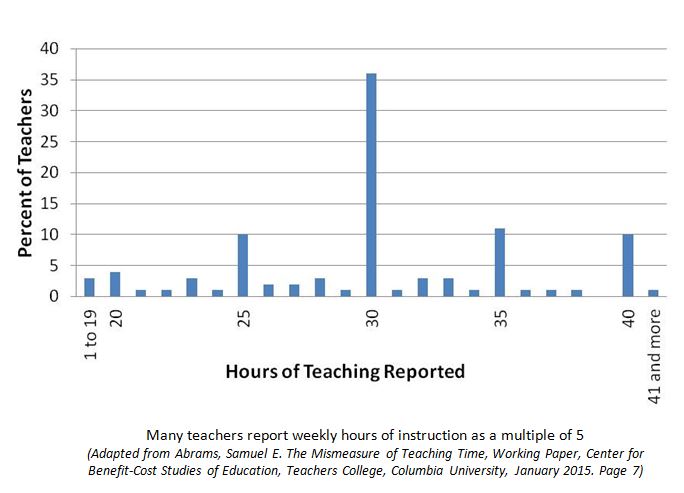The myth: U.S. teachers spend upwards of 50 percent more time in front of their students than teachers in
other countries (see more examples of this myth here,
here
and here).
The
reality: They don’t. A new studydigs into why survey data incorrectly suggest that our
teachers spend so much more time teaching a classroom of students (as opposed
to other kinds of activities such as
planning, classroom duty and tutoring students, which are counted
separately) than teachers in other countries.

The graph above depicts teachers’ responses to the survey question used
to gather U.S. data on teaching time–notice a pattern?
The question intends for teachers to add up how much time they spend
teaching each week and then round to the nearest hour. The responses spike at
intervals of five, suggesting that teachers estimated the amount of time they
teach each day to the nearest hour and multiplied by five (for the five
instructional days in the week), leading to an inflated amount of teaching
time.
For example, teachers who teach five 45-minute classes a day should have
reported 19 hours of teaching per week, but instead reported 25 hours, rounding
a 45-minute period to an hour.
This error of rounding seems to explain why, year after year, the OECD’s
Education at a Glance reports that U.S.
teachers spend significantly more time in front of their classrooms than do
teachers in other countries.
Another reason to
suspect the reported amount of teaching time is inflated? About a quarter of
the survey respondents reported teaching their students more hours than the
length of the school day itself.
